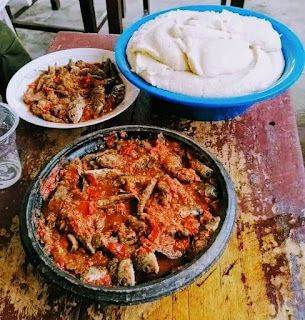

🌾 Explore the unique differences between Akple, Banku, and Wordeme—three traditional Ghanaian dishes made from fermented corn dough. Learn about their origins, preparation, and how to serve them.
Ghana’s rich culinary landscape is filled with comforting, flavorful dishes, many of which revolve around one essential ingredient: fermented corn dough. Among the most beloved are Akple, Banku, and Wordeme (or Wɔdeme). Though they share similar roots, these dishes vary in ingredients, texture, taste, and regional significance.
In this article, we break down the differences between these iconic Ghanaian staples and show you how to prepare each one at home.
🥣 What Do Akple, Banku, and Wordeme Have in Common?
All three dishes are:
- Made primarily from fermented corn dough
- Served as accompaniments to soups and stews
- Traditionally eaten by hand
- Rich in carbohydrates and dietary fiber
But despite these similarities, each dish has its own cultural roots, taste profile, and preparation method.
🥄 1. Akple – The Pride of the Volta Region
Origin: Ewe people of the Volta Region
Akple is a smooth, stretchy dumpling made from fermented corn dough. It’s a staple in Ewe households and often served with okra soup, palm nut soup, or fish stew.
🍽️ How to Make Akple
Ingredients:
- Fermented corn dough
- Water
- Salt (optional)
Instructions:
- Bring water to a boil in a pot.
- Mix a portion of fermented corn dough with a little cold water to form a paste.
- Gradually add the paste to the boiling water, stirring constantly to avoid lumps.
- Stir and cook on medium heat for 10–15 minutes until thick and stretchy.
- Let it cool slightly before serving.
Serving Suggestions: Pair with okra stew, palm nut soup, or abobi (fish) stew.
🍛 2. Banku – A National Favorite with a Tangy Twist
Origin: Popular across southern Ghana
Banku is made from a blend of fermented corn and cassava dough, giving it a slightly sour taste and a firmer texture than Akple. It’s commonly eaten with okra soup, groundnut soup, or pepper sauce with grilled fish.
🍽️ How to Make Banku
Ingredients:
- Fermented corn and cassava dough
- Water
- Salt (optional)
Instructions:
- Boil water in a large saucepan.
- Gradually mix in the fermented dough blend, stirring constantly.
- Cook for 10–15 minutes over medium heat until smooth and stretchy.
- Let it sit briefly before serving.
Serving Suggestions: Serve with grilled tilapia and spicy shito or okra soup with crab.
🍵 3. Wordeme (Wɔdeme) – The Softest of Them All
Origin: Ga people of the Greater Accra Region
Wordeme is sometimes called the “softer cousin” of Akple and Banku. Made solely from fermented corn dough, it’s known for its smooth, light texture and mild sour flavor. It’s often served with palm nut soup or groundnut soup.
🍽️ How to Make Wordeme
Ingredients:
- Fermented corn dough
- Water
Instructions:
- Mix fermented corn dough with enough water to form a smooth mixture.
- Pour into a pot and place on medium heat.
- Stir continuously for 10–15 minutes until it thickens and becomes very smooth.
- Allow to cool slightly before serving.
Serving Suggestions: Best enjoyed with groundnut soup, smoked fish, or palm nut soup.
🧾 Summary Table
| Dish | Main Ingredients | Texture | Taste | Popular Region |
|---|---|---|---|---|
| Akple |
corn flour |
Very soft but becomes hard after air passes through | Mild | Volta Region (Ewe) |
| Banku | Corn + cassava dough |
Firm, elastic | Sour | Nationwide (esp. South) |
| Wordeme | corn flour + Fermented cassava dough | Stretchy | Slightly sour |
Volta Region (Ewe) Greater Accra (Ga) |
💡 Final Thoughts
Though made from similar base ingredients, Akple, Banku, and Wordeme each offer a distinct taste and texture that reflects Ghana’s diverse culinary heritage. Whether you’re enjoying the gentle stretch of Akple, the tangy firmness of Banku, or the soft smoothness of Wordeme, these dishes showcase the magic of fermented corn dough in uniquely delicious ways.
Ready to try them all? Start with your region’s favorite, or host a mini tasting with all three!




